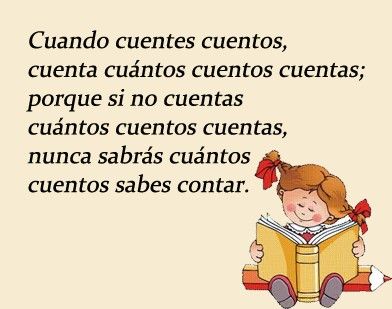Tongue twisters: what it is, main features, structure and more
Contents
What is tongue twister?
It is a type of expression of oral literature, integrated to this area due to its transmission through speech. The tongue twister consists of a short manifestation that is built from a structure whose pronunciation can be relatively complex due to the conjugation of words that must be similar to each other.

Although, like other expressions of this type of literature, it is not possible to clearly trace the origin, tongue twisters have been recorded in Ancient Greece, which were characterized by being created by great sages and included riddles, word games and paradoxes, almost always focused on an educational purpose.
Characteristics of tongue twisters
According to the previous information, let’s see some fundamental features of this type of expressions that will allow us to identify it from others in this same section. Thus, we find the following characteristics:
Educational objective
In its beginnings, the tongue twister was created mainly for educational purposes, which is why it was transmitted from generation to generation. This is due to the fact that within the Greek culture it was considered that the person who could pronounce a tongue twister correctly and without falling into the difficulty of pronunciation, could be admired for his reading ability and knowledge.
Universal character
An important characteristic of this type of expressions is that often, especially the oldest tongue twisters, have a universal character that has also crossed several cultures and has taken root, adapting itself to the language of the region where it arrives. This is the main reason why it is part of oral literature.
Benefits of tongue twisters
With the passage of time it has been possible to identify some benefits that the tongue twister has always had, among them we find the enrichment of vocabulary, reading comprehension, transmission of teachings, improve language fluency, mental development, improve reading speed, stimulation of the imagination, among others.
Dynamic component
Although the educational character of the tongue twister cannot be denied, a dynamic component must also be identified, which allows the expression to be seen as a dynamic space or even as an invitation to play, which increases the interest of the receiver or the one who is about to face and pronounce the tongue twister.
Structure of the tongue twister
The form in which the tongue twister is constructed may vary and may or may not be composed of different elements. However, we can identify a series of aspects that are usually included most of the times. Among them we find the use of the combination of similar phonemes, the alteration of words, the use of rhymes with two or three sequences of sounds, words or terms that are repeated, short or more extended extensions, among others.
Some tongue twisters can even play with the structures of the syllables, in the case of the Spanish language, for example, because due to its diffusion, they suffer changes with the arrival to a new region with another language.

Example of tongue twister
One of the most common examples of tongue twisters, known in different areas of the world is the following:
Three sad tigers swallowed wheat in a wheat field in three sad junks.
Three sad tigers were swallowing wheat in a wheat field in three sad junks.
How to write a tongue twister
Now, having seen all of the above, let’s go through step by step how we can write a tongue twister from scratch. The key is that we give free rein to our imagination. Let’s get started:
Reading other tongue twisters
Before starting, we recommend reading through several tongue twisters that will serve as a source of inspiration to write our own. This will also give us information about the difficulty it should have to fulfill the objective of this type of oral expression. Review, read and practice several tongue twisters.
Choosing a topic
According to your interest or that of the audience to whom you want to address the tongue twister, it is necessary to choose a topic on which we can begin to build it. In this way, we will be able to orient the content of the tongue twister with the precise terms to complete it. Some possible examples include animals, fruits, colors, means of transportation, means of communication, situations, etc.
Word organization
It is time to start writing a list of words that are related to the topic we have chosen. If we choose colors, for example, then we select a few to start writing the tongue twister. The ideal is to use words that can rhyme with the main words and that, if possible, have some kind of difficulty such as the presence of an “r”. If possible, look for words that have the same length.
Final outline
Now that we have the writing material, it is time to start with the final organization through which we are going to give the structure to the tongue twister. If you want to make it as an anecdote, it is time to add a few rhyming words at the beginning, and in this way start with the selection of the words we have chosen. Play with the words you use, try several ways to start, such as mentioning a name, and finally, put it into practice.
Nowadays, the use of tongue twisters still represents an important skill, this time related to the good condition of pronunciation, as well as a contribution to the optimization of the mind and speech, since its correct pronunciation improves diction.
